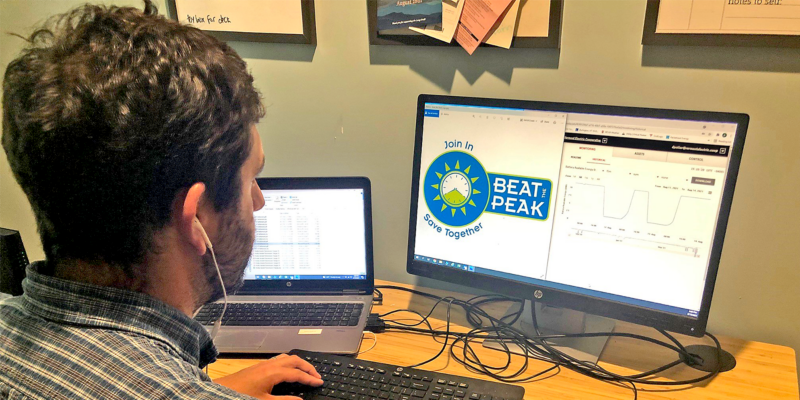Vermont Cooperative Invites Members to BYOB in Pilot Program

While craft brewing continues to take off across the Green Mountain State, Johnson-based Vermont Electric Cooperative (VEC) is focused a different type of BYOB.
In July, the distribution cooperative launched a pilot residential bring-your-own-battery (BYOB) program, called the Flexible Load – Home Battery Program. The goal of the program is to tap member-owned residential energy storage to reduce its contribution to Vermont’s statewide monthly peak demand and the Independent System Operator New England’s (ISO-NE) annual peak demand. Reduced peak demand will lower monthly transmission charges and capacity payments to ISO-NE.
VEC serves 32,000 members across eight counties and operates independently—outside of a typical generation-and-transmission structure—and must manage its power supply through ISO-NE.
VEC Offers a Financial Incentive to Draw Power from Member-Owned Batteries
The pilot BYOB program offers a financial incentive to members in exchange for the members’ permission for VEC to draw power from the member-owned batteries—up to 40 hours a month, but not to exceed four hours in any single day.
VEC offers members flexibility in how they can participate in the program:
- Members can enroll as little as 2 kilowatts of storage, and up to the full rating of their energy storage unit—typically 5 kW for a residential battery.
- Initial program design allows members to make an informed decision about opting out after receiving an email notification from VEC at least four hours prior to any peak-shaving event. However, members forfeit their incentive payment in any month their batteries are not available during a peak-shaving event.
- Members can choose to receive their financial incentive in monthly bill credits of $6.40 per kW a month for 10 years or in an upfront payment of $268 per kW, with the remainder paid as a monthly bill credit of $3.20 per kW.
“Consider all the effects of a potential storage program on your cooperative and give your project the best chance at success by forming an energy storage committee,” VEC Manager of Power Planning Craig Kieny explained. “Engage your senior leadership, finance and accounting, member services, engineering and power supply teams to get a whole business perspective.”
Multiple Energy Storage Systems Are Compatible
Members can BYOB from any energy storage manufacturer and any installer. The only requirement is the energy storage unit be compatible with either of two supported communications platforms: Tesla Grid Logic or Virtual Peaker. So far, energy storage systems from Generac, Sonnen and Tesla are known to be on its system and compatible with the communications platforms. The cost of a typical 5-kW Tesla Powerwall system is around $10,500.
“If your cooperative doesn’t find a way to work with its members on residential energy storage, then the vendors will offer solutions that may benefit the individual member, but may harm the rest of the membership,” Kieny said.
The program has the potential to significantly save VEC and its members:
- 1 kW shaved off monthly peak saves $12.50 in transmission charges for that month.
- 1 kW shaved off annual ISO-NE peak saves around $3.80 a month for the entire year.
- Sum total of annual savings possible for 1 kW peak shaving is $195.60 if VEC hits all 13 peaks with its storage dispatch. The cooperative assumes a 75 percent success rate when building its financial model; however, it has experienced around 90 percent success rate predicting the 13 peaks per year over approximately two years of experience leading up to the pilot.
The pilot program is limited to four members and includes three Tesla Powerwall systems and a Sonnen battery system. Based on initial results, VEC hopes to expand the program to other members.
Prior to the pilot project, VEC was aware of around 60 Tesla Powerwalls, three Generac PWRcells and one Sonnen battery connected to its lines.
“Don’t start your program from scratch,” Kieny said. “Take advantage of VEC’s lessons learned, templates and program structures so your cooperative can implement a program in less than a year.”